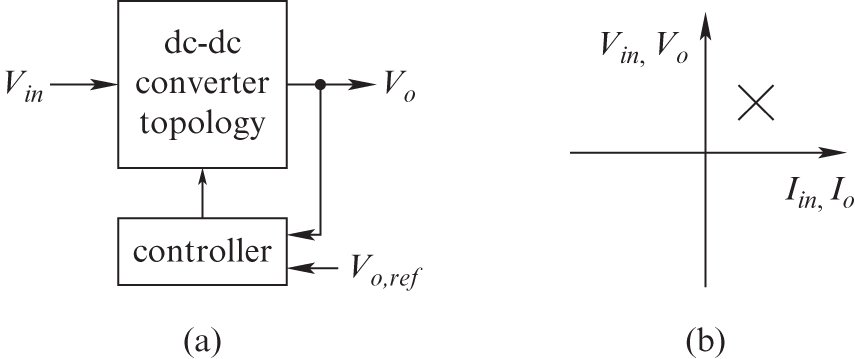3 SWITCH-MODE DC-DC CONVERTERS: SWITCHING ANALYSIS, TOPOLOGY SELECTION, AND DESIGN
In Chapter 1, we discussed various applications of power electronics, including those for energy sustainability. Some of these applications, such as harnessing solar energy using photovoltaics, use of fuel cells, and energy storage in batteries, require DC-DC converters to convert voltages and currents from one DC level to another and to operate these systems optimally. In addition to these direct applications, DC-DC converters form the basic block of conversion between AC and DC voltages, required in applications such as harnessing wind energy and efficiently adjusting the speed of drives in transportation and compressor systems for increasing energy efficiency.
3.1 DC-DC CONVERTERS[1]
Figure 3.1a shows buck, boost, and buck-boost DC-DC converters by a block diagram and how the pulse-width modulation process regulates their output voltage. The design of the feedback controller is the subject of the next chapter. The power flow through these converters is in only one direction. Thus, their voltages and currents remain unipolar and unidirectional, as shown in Figure 3.1b. Based on these converters, several transformer-isolated DC-DC converter topologies, which are used in all types of electronics equipment, are discussed in Chapter 8.

FIGURE 3.1 Regulated switch-mode DC power supplies
3.2 SWITCHING ...
Get Power Electronics, A First Course, 2nd Edition now with the O’Reilly learning platform.
O’Reilly members experience books, live events, courses curated by job role, and more from O’Reilly and nearly 200 top publishers.

